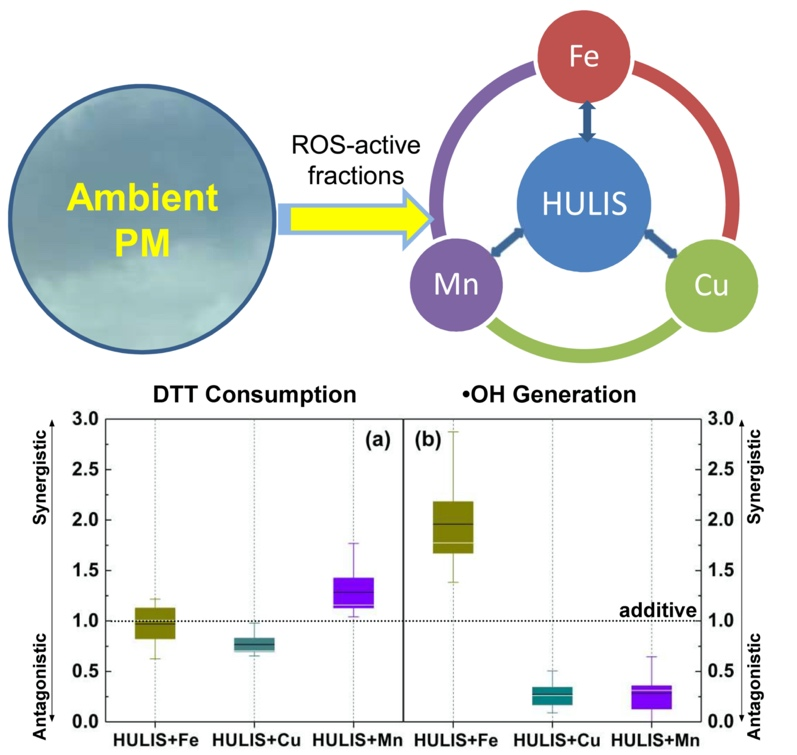Relative contribution of various chemical components in the overall oxidative potential and toxicity of ambient PM is still a matter of debate. A few studies have attempted to deduce the toxicity of the ambient PM from the intrinsic toxicities of its well-known redox-active components, by simple summation. However, this approach is flawed, as there could be both synergistic and antagonistic interactions among the PM components and antioxidants to alter their redox properties. Ignoring these interactions could lead to highly erroneous estimates of the total oxidative potential and toxicity of ambient PM and the contribution of various PM components in ROS generation. Through a series of publications, we have shown that four major components of the ambient PM2.5, namely HULIS (Humic-like substances), Cu, Fe and Mn interact in a complicated manner to yield the ROS activity and toxicity of the aerosols.
Related Publications
- Yu, H., Wei, J., W., Cheng, Y., Subedi, K., and Verma, V., 2018. Synergistic and antagonistic interactions among the particulate matter components in generating reactive oxygen species, Environmental Science and Technology, 52, 2261-2270.
- Wei, J., Yu, H., Wang, Y., Verma, V., 2019. Complexation of Iron and Copper in Ambient Particulate Matter and its Effect on the Oxidative Potential Measured in a Surrogate Lung Fluid, Environmental Science and Technology, DOI: 10.1021/acs.est.8b05731
- Wang, Y., Puthussery, J.V., Yu, H. Verma, V. Synergistic and Antagonistic Interactions between the Organic and Metallic Components of the Ambient Particulate Matter (PM) for the Cytotoxicity measured by Chinese Hamster Ovary Cells, accepted in Science of Total Environment.

